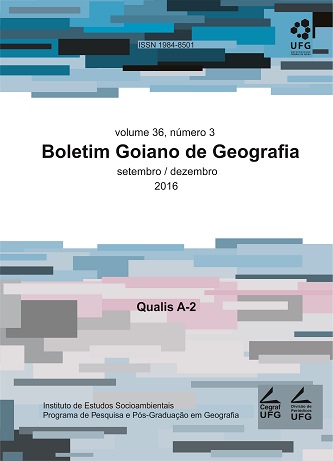ANALYSIS OF THE SPATIAL AND TEMPORAL VARIATIONS OF VEGETATION COVER IN THE ENVIRONMENTAL PROTECTION AREA OF CARIRI, PARAÍBA, BRAZIL - DOI 10.5216/bgg.v36i3.44558
DOI:
https://doi.org/10.5216/bgg.v36i3.44558Abstract
The Caatinga is inserted in the semiarid region of the Northeast and is characterized by floras adapted to live with semi-arid and seasonal rhythm of climate and hydrology. It has a long history of use and occupation that has considerably changed the natural vegetation covers that occur in this biome. Currently, with the availability of remote sensing technologies it is possible to evaluate the spatial and temporal changes in the various landscapes through the modeling of various biophysical parameters of vegetation. This study aimed to analyze the spatial and temporal changes of vegetation cover in the Cariri Área de Proteção Ambiental (APA) through NDVI and SAVI indexes with the processing of TM Landsat 5 sensor images during the years 1989, 2005 and 2010. Six cover classes were found in the APA, being four of them corresponding to the vegetation types of Caatingas with higher and lower level of human disturbance. The results show a progressive decline of the densest Caatingas in the analyzed period. The NDVI was closer to the real conditions of the vegetation of the study area. The vegetation indexes analyzed represent an indicator of the environmental quality of the area for future environmental planning.
Keywords: Caatinga, remote sensing, vegetation indexes
Downloads
Downloads
Published
How to Cite
Issue
Section
License
Authors will not receive any payment for publishing their work in Boletim Goiano de Geografia. Therefore, they must grant all rights to the journal. However, they are entirely and exclusively responsible for the published contents, and editors are free to make corrections or adjustments to texts in conformity with publication guidelines.







